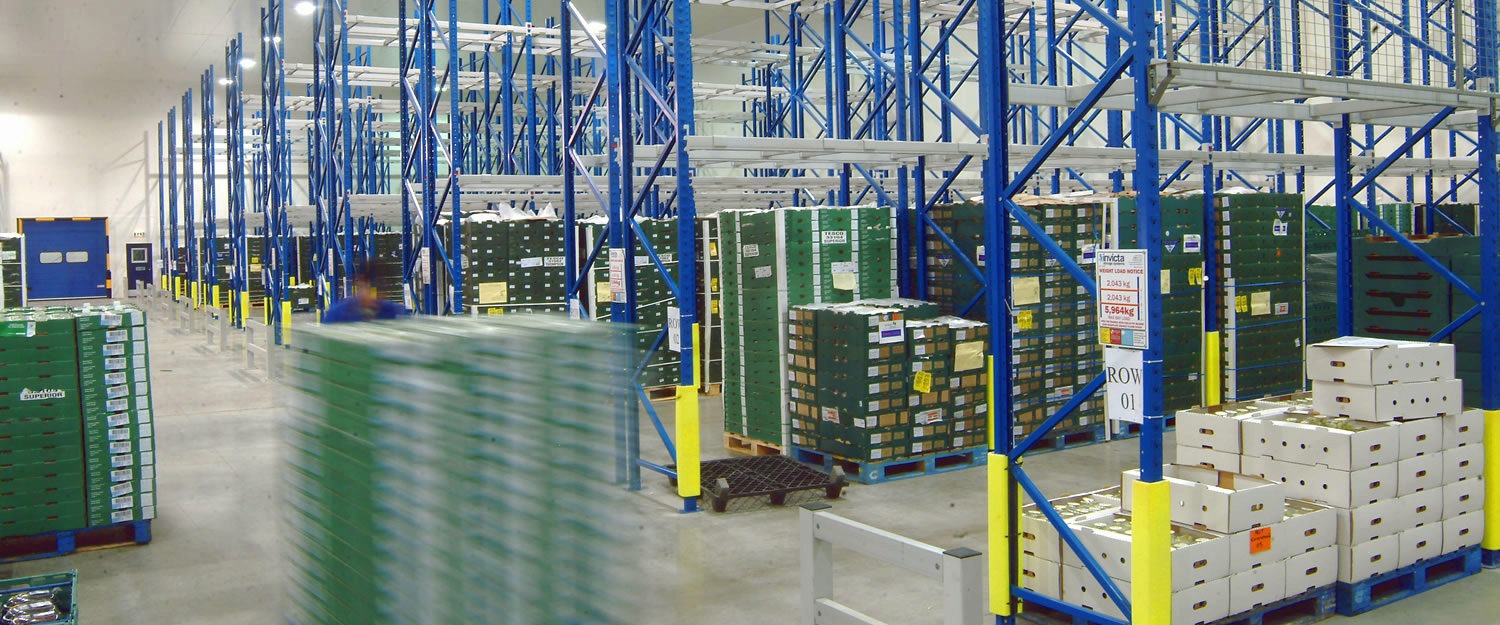For your information
You are being redirected to one of our divisional subsites which contains more detailed information on the required division. To navigate back to the main Invicta Group site, please click the link found in the footer at the bottom of the page.
Are warehousing and logistics facing a labour crisis?
7th October 2024
Quick Quote
Contact Mick Coyne
To get a quotation or arrange a free site survey - Call Mick Coyne on
-
 UK
UK
Current location:
Quick Quote
Contact Mick Coyne
-
 UK
UK
Current location:
Here in the UK, the minimum wage recently went up by the largest single increase in history. While overdue in many eyes due to the longstanding cost-of-living crisis, this change has worried some in warehousing and logistics. The UK’s mammoth logistics industry faces not only a difficult labour market, but also growing demand at a time of major cost pressures.
With a shortfall in warehouse operatives and continued global supply chain disruption, how should the UK warehousing and logistics sectors approach this issue, and protect themselves against the potential for further disruption? The answer as always is to find new efficiencies – in warehouse design, staff training, and embracing leading edge technologies.
The minimum wage and logistics
The hourly National Living Wage (for those aged 21 or over) has risen by 9.8% to £11.44, while the National Minimum Wage for 16 to 20-year-olds and apprentices has risen by between 14.8% and 21.2%. The London Living Wage is £13.15, although this is calculated separately, and companies are not bound to adhere to it by law. All of these are a response to unprecedented cost pressures on households, particularly to food items.
The reasons for this will be familiar to many in warehousing and logistics, as they’re often the same goods the sectors deliver. Major conflicts such as in Ukraine and Gaza have diverted and delayed freight, while certain goods have also become more scarce. Brexit has also introduced permanent delays that firms still have to reckon with, including a tighter window for fresh goods due to the need for additional checks and paperwork.
The other side of the issue for these sectors is recruitment. Despite the current crisis, the labour market is highly competitive, and many people (particularly young people) are happy to change jobs or roles in search of better pay. This has put a particular squeeze on logistics, which particularly relies on lower-paid workers to perform vital menial work in and around warehouses. Brexit is again perhaps relevant here, with the necessity to secure visas for EU employees who could previously have come to the UK and worked freely.
Rising cost pressures
All of these pressures clash with what should be a profitable time for the sectors. While many costs have risen, so has demand: ecommerce continues to thrive, with substantial growth outside of the traditional e-commerce giants such as Amazon. If anything, the demand is outstripping supply, with companies struggling to build enough warehouses to support it. This relates not only to higher sales, but also to the changing nature of logistics, with UK customers increasingly expecting next-day or same-day deliveries.
This means warehouses are being sought closer to cities, including smaller distribution centres within cities. These require different designs, technologies and skill sets from employees, and may well be a vision of the changes coming in the sector. Despite this, the initial cost of investment for such spaces is high, and in seeking to further optimise logistics to bring down delivery times, other costs (such as picking errors and damaged stock) can rise – not to mention businesses reducing their profit margins to fulfil customers’ expectations on deliveries.
The pressing question with all of this is: what can be done? There are ways the government could alleviate difficulties in the labour market for logistics. Yet it’s likely the onus for adjusting to these changes will be largely on the business side. This means finding new optimisations across the sectors and supply chain: in warehouse design, employee training and management, and the implementation of a range of new technologies.
Optimising your warehouse
Racking investment may not make the most sense as a way to decrease costs, but it can yield outsized rewards. Racking is often seen as a one-size-fits-all solution, and installed and used in ways that don’t necessarily make sense from a logistical perspective. Thinking more holistically about how your racking fits your workflow and the design of your warehouse space can help you to unlock new efficiencies, including reducing travel times and picking times for your operatives.
A basic optimisation would be configuring your racking to store the most commonly purchased SKUs closer to your fulfilment or distribution areas, ensuring that the largest proportion of journeys are as short as possible. But this is only the tip of the iceberg. Live racking can help to deposit items at the pickface for easy access, while pallet shuttle racking can help to quickly commute pallets from a deep rack.
Another approach is to save money by increasing your storage capacity or reducing the floor space occupied by your racking, delaying a costly move or expansion. Specially adapted forklifts for instance can allow you to deploy narrow-aisle racking, greatly increasing your available storage capacity. Double-deep racking could allow you to store the same number of pallets in a smaller footprint; while multi-tier racking could utilise unused headroom in your facility and improve traffic flows with the addition of lifts, staircases, and walkways.
Automation and innovation
An improvement that can benefit all aspects of logistics is adopting new technology. This applies to the warehouse, where handheld scanners and mobile apps can help to quickly locate aisles, and guide operatives to the correct pickface. The adoption of a modern warehouse management system can aid this, automating stock management and sending orders to operatives’ devices as they come in. At the cutting edge, this tech can even be used to optimise warehouse traffic, guiding operatives much like Google Maps guides cars around congested areas.
Less esoteric is the potential of robotics and automation. Autonomous or semi-autonomous (on rails) vehicles and ‘cobots’—robots that can safely work alongside human operatives—can take on some of the roles of a warehouse operative. This not only extends to moving pallets around the warehouse, but also picking and packing items, with robots becoming increasingly capable at handling small and delicate items reliably.
Where new operatives may be needed to oversee this, higher salaries are likely. However, the availability of this talent may be higher than the volume of employees they are replacing—and there may also be a possibility to upskill existing employees. Operatives training to manage and work with robots will often be excited to work with this tech, particularly young people. This is something that can improve retention, as people see a better-paying and less menial career pathway within the business.
Looking forwards
Technology elsewhere in the supply chain can also be differential. Better end-to-end tracking of goods and orders can help to highlight inefficiencies by tying into warehouse management systems. The data collected and formatted by these systems can be aggregated and analysed to find problems such as stock shortages, and adjust when stock is reordered. 3PLs meanwhile can tap into these systems to provide more data, and coordinate pickups and deliveries based on predicted and actual order volumes for certain locations. Delivery robots are even being trialled with some success, although this may be infeasible for most.
The main point with all of this is that these adjustments are increasingly accessible to a range of businesses. Racking is often modular, and can be adjusted by a racking provider, with new racking installed quickly and with little disruption. Autonomous vehicles and cobots can be leased from robotics-as-a-service (RaaS) companies, who take on some of the burden of maintenance, and allow you to either upgrade and scale up your investment, or bring it back down if they don’t work for you.
Whether you opt to augment your workforce with robots or cover absences through more efficient design, there are optimisations to be found across the sectors. It may not be an ideal time for investment, but the emergence of these opportunities is difficult to ignore – and could be the perfect tonic for an otherwise difficult period.











Share/Like this page